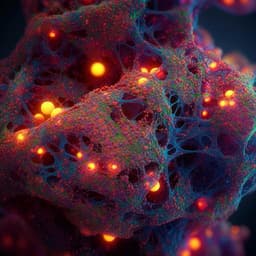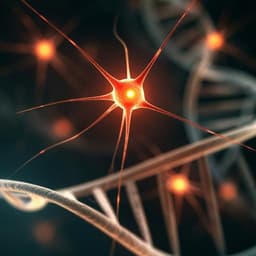Introduction
Cell-to-cell communication, primarily through secreted proteins and their membrane receptors, orchestrates crucial cellular processes such as proliferation, migration, and differentiation. In healthy tissues, this communication is tightly regulated, maintaining homeostasis. However, disruptions in these interactions within the tumor microenvironment are implicated in cancer progression and metastasis. Understanding these intercellular ligand-receptor interactions is therefore vital for both fundamental biological understanding and the identification of potential therapeutic targets. Existing methods for profiling cell surface interactomes, such as yeast two-hybrid (Y2H) and affinity purification-mass spectrometry (AP-MS), often lack the biological context of in vivo interactions. Ex situ methods struggle with the hydrophobic transmembrane regions and glycosylation of membrane receptors, frequently missing transient and weak interactions. In situ approaches, such as crosslinking mass spectrometry (XL-MS), offer improved biological relevance but suffer from limited sensitivity. Existing ligand-receptor crosslinking techniques often demand large quantities of pure ligand and a high number of cells, hindering their application to primary cells. Proximity labeling methods, while sensitive, are hypothesis-driven and focus on specific proteins of interest, not providing a comprehensive, unbiased view. This research addresses these limitations by introducing a novel, hypothesis-free chemical proteomic approach.
Literature Review
The authors review existing methods for identifying cell surface interactomes, highlighting the limitations of existing ex situ (e.g., Y2H, AP-MS) and in situ (XL-MS, proximity labeling) techniques. Ex situ methods struggle to capture the complexity of native membrane proteins due to their hydrophobic nature and glycosylation, leading to incomplete interaction profiles. In situ methods such as XL-MS and proximity labeling, while offering advantages in biological context, are still limited by sensitivity and the need for substantial amounts of starting material. Existing ligand-based receptor capture technologies like TRICEPS and HATRIC require large amounts of pure ligand and numerous cells, rendering them unsuitable for studying primary cells or low-abundance interactions. The review lays the groundwork for the need for a high-sensitivity, hypothesis-free approach that overcomes these limitations.
Methodology
The researchers developed a novel chemical proteomics approach called interaction-guided crosslinking (IGC) to identify in situ ligand-receptor interactions. They designed three trifunctional probes: Probe 1 (diazirine-based photoaffinity probe), Probe 2 and Probe 3 (oxime-ligation and click chemistry-based probes). The probes comprised a ligand-coupling group (NHS ester or aminooxy group), a crosslinking group (diazirine or alkyne), and a biotin tag for enrichment. For the Photo-IGC method (using Probe 1), purified ligands were conjugated to the probe via NHS ester chemistry, incubated with living cells, and crosslinked upon UV irradiation. For the Click-IGC method (using Probes 2 and 3), the secretome was conjugated to the probe via oxime ligation after glycan oxidation, and then incubated with cells metabolically labeled with azide-modified sugars. Crosslinking was achieved through copper(I)-catalyzed azide-alkyne cycloaddition (CuAAC). Following crosslinking, the complexes were enriched using streptavidin beads, digested, and identified by LC-MS/MS. The authors optimized various parameters, including ligand-to-probe ratio, streptavidin bead concentration, and CuAAC reaction conditions to maximize sensitivity and specificity. Several known ligand-receptor pairs were used to validate the approach, demonstrating high specificity and sensitivity, particularly the Click-IGC method which proved superior for low-abundance ligands. The methodology includes detailed protocols for probe synthesis, ligand conjugation, cell labeling, crosslinking, protein enrichment, digestion, mass spectrometry, and data analysis.
Key Findings
The IGC method, especially the Click-IGC approach, exhibited exceptional sensitivity and selectivity. It successfully identified known receptors for various ligands, including EGF, HGF, insulin, and PDGF-B, using significantly lower amounts of ligand and cells compared to existing methods. The method proved highly effective even with low-abundance ligands, outperforming NHS ester-based approaches. When applied to study paracrine communication between pancreatic cancer cells (PCCs) and pancreatic cancer-associated fibroblasts (CAFs), IGC revealed a novel interaction between urokinase-type plasminogen activator (PLAU), a secreted ligand from PCCs, and neuropilin 1 (NRP1), a receptor on CAFs. Further functional studies confirmed that PLAU promotes CAF proliferation and activates the ERK and AKT signaling pathways in a dose-dependent manner. Silencing PLAU in PCCs reduced CAF proliferation in co-culture experiments. A direct binding assay confirmed the interaction between PLAU and NRP1 with a Kd of 9.5nM. Silencing NRP1 in CAFs inhibited PLAU-induced proliferation and ERK activation. These findings highlight the power of IGC in uncovering previously unknown ligand-receptor interactions critical for intercellular signaling in complex biological systems.
Discussion
The IGC methodology significantly advances the field of chemical proteomics by providing a powerful tool to decipher complex intercellular signaling networks. Its high sensitivity and ability to identify interactions using minimal starting material enables the study of low-abundance ligands and primary cells, which were previously challenging. The discovery of the PLAU-NRP1 interaction provides new insights into pancreatic cancer progression and highlights the role of the tumor microenvironment in driving disease. The IGC platform's broad applicability opens avenues to study various other cell-cell interactions in different biological contexts and identify novel therapeutic targets.
Conclusion
This study successfully developed and validated a novel interaction-guided crosslinking (IGC) chemical proteomics approach for identifying ligand-receptor interactions in situ with unprecedented sensitivity. The method's effectiveness was demonstrated by identifying a novel interaction between PLAU and NRP1 in the pancreatic cancer microenvironment. The IGC platform represents a significant advance in understanding complex intercellular signaling, offering potential for discovering new drug targets and advancing our understanding of diverse biological processes. Future research could explore the application of IGC to other biological systems and investigate the detailed mechanisms underlying the identified interactions.
Limitations
While the IGC method demonstrates high sensitivity and specificity, there are limitations. The reliance on glycan labeling in the Click-IGC method might not be applicable to all proteins, potentially biasing the results toward glycosylated proteins. The use of cell lines, while convenient, might not fully represent the heterogeneity of primary cells in vivo. Further, the study focused on a specific cancer model; broader validation in different cellular contexts and disease models is necessary to fully establish the method's generalizability.
Related Publications
Explore these studies to deepen your understanding of the subject.






